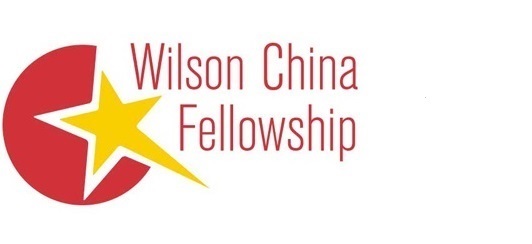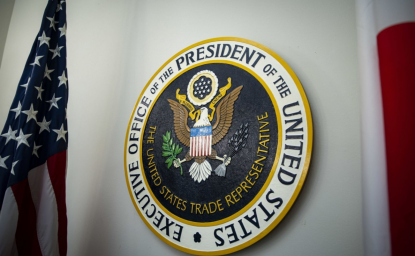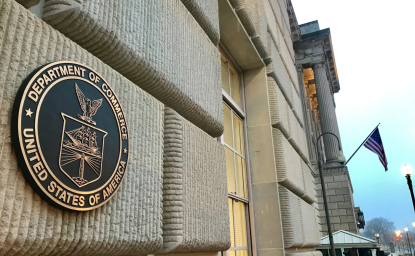Bipartisan Embrace of Denying Realities Escalates Future Economic Risks
Mark Kennedy
Director, Wahba Institute for Strategic Competition
As the US drifts further from the economic orthodoxy that propelled America to global economic leadership, I am struck by how those across the political spectrum deny reality in justifying their protectionist actions.
Reality Denied: “Tariffs won’t increase inflation.”
We are led to believe that whether tariffs cause inflation is different, depending on which president implements them.
Referring to new tariffs proposed by Donald Trump, President Joe Biden’s spokesman Andrew Bates said in August that, "Combining a sweeping tariff tax on the middle class with more trickle-down tax welfare for rich special interests would stifle economic growth and fuel inflation." Bates said that President Biden "strongly opposes" the Trump plan, suggesting it would lead to higher prices and higher inflation. Indeed, analysis shows that part of the resurgence in inflation we have experienced recently is from tariffs on Chinese imports.
Now, as Biden rolled out his added tariffs on China this week, US Trade Representative Katherine Tai asserted, “I think that that link in terms of tariffs to prices has been largely debunked.” Tai argued that “the tariff hikes, combined with public investments, would help spur domestic manufacturing, which could help prevent future inflation and price volatility.”
Clearly supply chain shocks relating to the COVD-19 pandemic had a major impact on inflation and investments recently sparked may or may not over time have a perceptible impact on this variable. But whether fueled by “tax welfare” or “public investment,” the International Monetary Fund thinks US core inflation (excluding food and energy) “is a half percentage point higher than otherwise would be because of fiscal policy” as the US continues massive deficit spending during today’s period of low unemployment. Contrary to Tai’s assertions, this deficit funding spending magnifies rather than mitigates inflation.
Those seeking to provide a 101 explanation of economics put it this way:
Tariffs increase the price of goods and services in domestic markets by applying a tax on imported goods that is paid by the domestic importer. To cover the increased costs, the domestic importer then charges higher prices for the goods and services.
Does anyone really think that the tariffs on Chinese solar panels will not lead to increased prices on solar panels available in the US (and slow down progress toward the energy transition)?
Reality Denied: “Other nations won’t retaliate.”
In his defense of his idea for broad tariffs on friends and foe alike in pursuit of achieving a balance of trade, US Trade Representative in the Donald Trump administration Robert Lighthizer doubts others will retaliate. Yet both historical and recent facts suggest otherwise.
President Biden recently called for tripling tariffs on Chinese steel and aluminum imports (that represent only 0.6% of the US market). The next day, China imposed a 43.5% tariff on propionic acid it says the US is dumping on the market.
Coincident with a new law requiring TikTok to be banned if it is not sold in nine months, China ordered Apple to remove several social media sites from it app store, including Meta-owned apps WhatsApp and Threads.
Given all the advance warnings that China received about the US responding to its perceived “overcapacity” during visits by Treasury Secretary Janet Yellen and Secretary of State Antony Blinken, Yellen recently said she hoped the US will not see a significant Chinese retaliatory response. Yet she was honest enough to admit, “but that’s always a possibility.”
Does anyone not believe that Chinese imports of US agricultural products being at a three-year low are driven in significant part by retaliation against tariffs?
The list of denied realities is much longer, including that solar panel imports represent a strategic threat to the US. Suffice it to say that two parties out-competing each other in their embrace of economic myths, rather than holding each other to account based on proven realities, escalates future economic risks.
Tariffs Have Consequences
Jerry Haar
Global Fellow, Wahba Institute for Strategic Competition
In the fast and furious competition between presidential candidates to determine who is more protectionist than the other vis-à-vis China, President Biden has upped the ante with his recent announcement of new tariffs of $18 billion on Chinese EVs, semiconductors, batteries, solar cells, steel, and aluminum. (The current tariff of 25% on EVs will increase fourfold, to 100%.)
While EVs are in the center ring of this three-ring protectionist circus, the pathology of our trade predicament extends beyond any one industry and has its genesis in politics, pure and simple, combined with media that thrives on stirring things up and a public whose basic knowledge of economics would fill half a thimble.
Xenophobes and isolationists who would sever economic relations with China buy into the specious argument that “we don’t make anything anymore” and we need to adopt a strictly made-in-America agenda and “bring those jobs back home.” While it is true that traditionally US-made products such as TVs, Levi’s jeans, cellphones, flatware, and steel rebar are sourced overseas, the US exports more than $165 billion in goods to China, including machinery, electrical equipment, vehicles, aircraft, and pharmaceuticals—all high-value goods that employ thousands of Americans, directly and indirectly. Additionally, when the media reports US-China trade balances, it invariably excludes our greatest strength in global commerce—services, where the US registers a surplus with China of nearly $15 billion. Travel, financial services, and intellectual property are among our leading exports to China. The last is clearly the most important since intellectual property is a knowledge-based asset that a great many Chinese manufacturers incorporate into their finished products under licensing agreements with US firms. Ironically, that would make many Chinese imports also (in part) a U.S. export.
Back to EVs, the Biden administration champions a “green” agenda where alternative energy is a high priority. Therefore, increasing tariffs impedes the goal of a carbon-free planet. Figuratively speaking, it is the equivalent of a circular firing squad, where the result will be an increase in EV prices for consumers not only in the short term, but in the long term. The price of fossil fuels will not be rising any time soon, thereby creating a disincentive for consumers to purchase electric vehicles.
One can expect China to retaliate in some form in response to the Biden administration’s latest tariff salvo, while the administration itself would be wise to keep in mind that the US is 100% reliant on imports for more than a dozen key minerals deemed critical by the US government. China is the primary import source for those minerals.
Like it or not, the US and China need one another to address serious global problems such as drug trafficking, terrorism, fentanyl, transnational crime, and environmental degradation. It would be an enormous mistake for America to jeopardize its national and economic security due to political expediency. Tariffs, indeed, have consequences.
The Folly of Biden’s New China Tariffs
Marc Busch
Global Fellow, Wahba Institute for Strategic Competition
On May 14, US Trade Representative Katherine Tai announced the result of her office’s four-year review of the Section 301 tariffs on China.
The review finds that the duties “have been effective” in getting China “to take some steps” to stop its “unfair technology-related policies and practices,” but concludes that “further action is required.”
The press release explains that further action will entail adding new tariffs and increasing existing ones. Tai’s list of proposed tariff hikes includes electric vehicles (100%), lithium-ion batteries (25%), medical gloves (25%) and semiconductors (50%), among others.
The 1974 Trade Act allows for Section 301 tariffs to be recalibrated to ensure compliance from a recalcitrant trade partner. But this list looks to be more about supporting President Biden’s green initiatives. The 301 report explains that “[f]or many of the sectors covered by these proposed tariff increases, the United States has made significant investments, including through such initiatives as the IRA and the Bipartisan Infrastructure Law.”
Tai’s tariff salvo is about US competitiveness in clean technology, not Chinese forced-tech transfer policies. The Biden administration has done nothing to protect the intellectual property of America’s innovators, as evidenced by its retreat on digital trade and its feckless Special 301 Report issued in April. But if cheap talk about intellectual property clears the way for Tai to slap new tariffs on China and support Biden’s floundering executive order on electric vehicles, she’s all in.
Moreover, the press release flags the negative effects of the Section 301 tariffs “associated with retaliatory tariffs that the PRC has applied to US exports.” This is important, because the 1974 Trade Act does not give the president authority to wage an all-out trade war. But that’s what Presidents Trump and Biden have done through four rounds of Section 301 tariffs, and now into another round.
HMTX and other American companies will argue this before the US Court of Appeals for the Federal Circuit, looking for a tariff rebate. They insist the third and fourth lists of 301 tariffs were not mere adjustments of the first and second, but an “unprecedented, unbounded, and unlimited trade war impacting over $500 billion in imports from the People’s Republic of China.” The US Court of International Trade refused to “unscramble this egg,” but Tai’s proposed China tariffs may help the Court of Appeals get the job done right this time.
In this election season, new China tariffs will make a good soundbite on the campaign trail. But new import duties will punish American companies that use imported inputs or retail consumer goods. It’s time for Congress to rein in these abuses of Section 301 and reclaim its authority on tariffs.
New US Tariffs on China, “China Plus One,” and Southeast Asia
Lucas Myers
Senior Associate, Southeast Asia and Indo-Pacific Program
The US announced a suite of new tariffs on Chinese imports targeting the electric vehicle and green and advanced technology sectors. Following its covid-era economic slowdown, the People’s Republic of China has pursued an export-driven model to jolt its recovery, but concerns about overcapacity soon emerged around the world. The US tariffs are a response to protect its still-burgeoning industries in these key sectors, as well as in line with policies intended to boost domestic manufacturing in America.
However, amidst bilateral US-China rivalry and American efforts to protect strategic industries, perhaps the biggest potential winners are the countries in the Association of Southeast Asian Nations (ASEAN).
The US-China trade war and the risks of investing in China spurred many international firms to pursue a “China Plus One” strategy in recent years, aiming to diversify manufacturing and mitigate supply chain dependence upon China. Southeast Asia, by virtue of its relatively young population, free trade agreements with key players, prime geographic location, and competitive labor costs, is a magnet for foreign direct investment in manufacturing. Indeed, data suggests that the ASEAN states, particularly Vietnam, emerged as winners in the initial stages of the US-China trade war. By 2022, ASEAN exports to the US had soared 17.6 percent over the previous year to $336.4 billion, and every Southeast Asian state bar Brunei and Singapore expanded their share of US imports. In 2023, China had ceased to be the top exporter to the United States.
Yet, the picture is somewhat more complicated than a simple story of multinational firms moving to Southeast Asia to avoid China. Moreover, US efforts to secure and diversify its supply chains are far from simple in ASEAN.
For one, it is not only American companies making the shift to Southeast Asia but Chinese manufacturers too. Crucially, Chinese firms are attempting to bypass tariffs by selling components to manufacturers in ASEAN, whose finished goods eventually enter the US market marked as originating in places like Vietnam. Indeed, there are now calls for the imposition of tariffs on solar cell imports from four Southeast Asian countries due to allegations of Chinese manufacturers bypassing existing tariffs. In the electric vehicle sector, Chinese companies are aggressively pushing into Southeast Asia both as a booming market and a manufacturing hub, particularly Thailand.
Second, US economic engagement in the region still lags China’s. While the US government works to facilitate economic ties, such as considering upgrading Vietnam to “market economy status,” and pursues closer investments and relations across the board—often in conjunction with other allies and partners like Japan—the market access that ASEAN craves is not on the table. Meanwhile, ASEAN’s trade with China continues to grow, complicating regional calculus in US-China competition. US efforts to provide an effective alternative to China, such as in Indonesia’s crucial nickel industry, have fallen flat. Although the US remains the largest source of foreign direct investment in Southeast Asia, China is attempting to tie the region to it economically.
As the US grapples with China over trade and the industries of the future, more global manufacturing can be expected to move to Southeast Asia. But today China still has an edge in ASEAN’s economies. The US must do more to ensure that “China Plus One” in ASEAN leads to secure, diverse supply chains and that the region has a viable alternative to Chinese investment.
Biden Administration China Sanctions Reveal True Policy Objectives
Keith Rockwell
Global Fellow, Wahba Institute for Strategic Competition
The decision by the Biden administration to levy punishing tariffs on an array of Chinese imports will have little economic impact. But should these trade frictions spread, and there is a chance they will, the diplomatic consequences may be much more severe.
All told, $18 billion of Chinese imports will be hit with higher tariffs. Duties on electric vehicles will quadruple to 100%, duties on steel will jump threefold to 25%, while tariffs on lithium-ion EV batteries will rise by the same margin also to 25%.
China dominates the global electric car market and exports this year are expected to grow 25% to 5.3 million units. But in the US market the Chinese have no presence.
For years, a cavalcade of US anti-dumping and countervailing duties have suppressed Chinese sales of steel and today China makes up less than 1% of total US steel imports.
But this is an election year and with industrial states like Michigan, Wisconsin and Pennsylvania key to the presidential prospects of both President Biden and Donald Trump, this week’s announcement comes as no surprise. Neither candidate wants to be seen as weak on trade with China and when Mr. Trump said he would raise tariffs on electric cars to 100%, Mr. Biden beat him to the punch.
Beyond the muscle flexing, this announcement reveals the inherent inconsistencies in the administration’s flagship Inflation Reduction Act. The act has been billed as a game changer in addressing climate change, but the reality is that the law features a plethora of conflicting objectives. The Chinese are the world’s leading producers of electric cars and solar panels, and they make and sell them far cheaper than anyone else. If the IRA was really all about the environment it would make sense to ensure that affordable electric vehicles and solar energy were available to everyone.
The new tariffs expose the real motivation behind the IRA and the Chips and Science Act – the creation and preservation of US jobs, ideally the administration believes, union jobs. The IRA’s tax incentive scheme is heavily skewed against foreign producers of electric cars and batteries and domestic companies have, for now at least, been unable to price these cars attractively. This, together with an underdeveloped charging network, helps explain why EV demand is flagging.
China is well aware of the growing alarm in the US and European Union at the threat of surging Chinese exports. Chinese carmaker BYD, the world’s largest producer of electric vehicles is building a production facility in Hungary, an EU member state. BYD and other Chinese producers are actively considering setting up shop in Mexico which would enable them to sell cars in the US duty-free. Moreover, by producing in North America they could also be eligible to tap into the rich vein of subsidies on offer under the IRA.
The Biden administration has taken note. Washington has flagged its concerns to Mexican officials and is now reaching for the “national security” trade lever by conducting, since February, an investigation into whether “connected” Chinese cars might provide a means to access data of American consumers and should thus be banned.
But it’s a tricky balancing act. Mexico is the largest US trading partner selling more goods to the country than any other and importing more US goods than any country but Canada.
Like all countries Mexico wants to be seen as welcoming foreign investment and the Chinese already have manufacturing operations in the country. If elected, Mr. Trump intends to violate the terms of the agreement he negotiated with Mexico by slapping 100% duties on cars built in Mexico by Chinese companies. Would President Biden entertain such a move as well?
Mexicans go to the polls June 2 and Mexico City Mayor Claudia Sheinbaum is widely expected to win. President Biden understands sanctions would be a slap in the face of the new president of his country’s largest trading partner.
On solar panels the problem is similar. Chinese imports into the US have not been huge but Chinese owned companies in Southeast Asia have seen their exports to the US market jump in the last year. To hit these products with duties risks alienating the Malaysians, Thais and Vietnamese. The Biden administration’s supply chain resilience plan hinges on “friendshoring” and Mexico, Thailand and Vietnam are often cited as key friends. Hammering imports from these countries would not be considered friendly.
There is little doubt China’s massive government support tilts the playing field in trade in electric cars, steel and solar panels. We will learn soon the extent of this support when the European Union releases its study on Beijing’s EV subsidies.
But trade sanctions are a blunt instrument which often inflicts damage on unintended targets including allies and domestic consumers. The cost of these actions will likely rise soon if the Chinese retaliate against, say, General Motors which sold 2.1 million cars in China last year.
The US-China commercial relationship is probably beyond repair, at least in the short term. As trade tensions escalate the bigger danger is the threat of collateral damage to US allies, to the development of resilient supply chains and to the administration’s environmental aspirations.
Protectionism Is Hurting US Allies
Rory Linehan
Global Fellow, Wahba Institute for Strategic Competition
As I’ve argued previously, the US’ greatest strength is its network of allies, underpinned by shared values such as democracy, human rights, and market-driven economies.
The US was only able to build the global economic order, multilateral institutions and create new markets for its good and services with the support of our allies, guided by shared values. This helped usher in an unprecedented era of global peace and prosperity which now stands in jeopardy.
The latest round of US tariffs on China reflects a broader push to protectionist policies by successive administrations. From the blanket steel and aluminum tariffs of the Trump Administration to the subsidies of the Inflation Reduction Act to the Biden Administration’s new China tariffs, the US Government has upended its approach to a market-driven economy. While the US isn’t alone among its allies in pursuing protectionism, it stands out as a leader in the breadth, depth, and scope of its actions.
This is deeply concerning. The two major world wars were both preceded by sharp rises in protectionism. Economic integration is a key to securing peace. Countries that trade together, rarely go to war together – the economic pain is just too high. Protectionism is a tool that must be used sparingly because its unintended consequences are significant.
United States Trade Representative, Katherine Tai, has said the primary goal of the latest round of tariffs is to motivate China to change its unfair trade practices. Issues such as forced IP transfer and IP theft should and must be addressed. National security and securing supply chains are worthy goals. However, the US Government itself has legislated many of the same subsidies and tariffs to support its own manufacturing industry that it complains China is doing.
Moreover, US protectionist policies are not just hurting China, they are hurting our allies. The steel and aluminum tariffs not only hit China but the European Union and Japan. The subsidies of the Inflation Reduction Act made it harder for US allies to do business in the US. In response, Japan, the EU, Canada, Australia, and others have since implemented their own domestic subsidies which will make it harder for US businesses to compete abroad and further erode shared economic ties.
In this week’s round of tariffs, the Biden Administration acknowledged the need to work with likeminded partners to curtail China’s unfair trading practices and the benefits of a rules-based trading system. This was terrific to see. However, many of the US’ partners could rightly complain about its own market distorting practices. If the goal of this week’s tariffs was to encourage China to change its unfair trading practices by working together with allies, the US will find this hard going. While it will likely find some success on China’s dumping of EVs and solar panels, it will not find much sympathy for its broader complains of unfair trading practices. In the longer term, if it’s an economic choice between the US and China, that decision is made. China is the top trading partner to more than 120 countries. US allies, the EU, Japan, ASEAN, the UK, and New Zealand have Free Trade Agreements with China but not the US. In an environment where China’s economic ties continue to increase with US allies, it’ll be a hard sell for any US Administration to convince allies to side with it over China.
If the Administration is to achieve its stated goal of changing Chinese unfair trading practices by working with partners, it’ll need to also consider its own trade-distorting policies and reignite a policy of market-driven economic integration with its allies. If not, the US may isolate itself from its allies at a time when the world desperately needs to come together to address our shared challenges.
US Tariff Diplomacy: “It’s China Stupid; Never Mind the Environment.”
Klaus Larres
Fellow, Global Europe Program and Kissinger Institute on China and the United States
US-Chinese relations have been on a downward slope for almost a decade. The formal announcement that the Biden administration intends to significantly increase tariffs on electric vehicles (EV), solar panels, advanced batteries, and other climate-related technologies from China has raised tensions further. Yet this was an unintended though not unforeseen consequence; it was not the driving force behind President Biden’s decision. In fact, the US is deeply concerned about keeping relations with Beijing on an even keel to prevent them from veering out of control, as threatened to be the case before the bilateral Biden-Xi Jinping summit in San Francisco in November 2023.
Above all, Biden’s tariff diplomacy is dictated by the US general election in November 2024. It also relates to the Biden administration’s concerns regarding US national security and its vision of how the green energy transition in the US should proceed. Biden has imposed new tariffs on Chinese products for three major reasons:
- In view of Donald Trump’s loose talk about his firm and protectionist foreign policy course if he were to be elected in November, Biden clearly feels that he too has to demonstrate that he is equally tough, if not tougher on China, than his Republican competitor. In practice, imposing 100 per cent tariffs on Chinese EVs, for instance, means little in view of the fact that just over 2,200 Geely-made EV vehicles entered the US market in 2023. Yet Biden clearly believes that among undecided voters, his rhetoric about defending the American car industry against a forthcoming industrial onslaught from China may help his electoral prospects.
Recent polls have shown Biden is behind Trump in five of the six most important swing states. As Biden needs to win Pennsylvania, Wisconsin, and Ohio (all states with large manufacturing bases) to get a second term in office, the imposition of extremely high tariffs on EVs, solar panels, advanced battery cells, and other high tech and climate-related technological products might be decisive for winning these states.
- The Biden administration also appears to be genuinely concerned that having China dominate the supply lines for manufacturing EVs (and other climate-related products such as solar panels) would have a seriously negative impact on US national security. That way, Beijing might well be able to raise prices unexpectedly, put pressure on the US government by limiting production resources, threaten to disrupt US domestic energy, and, not least, also obtain data collected by EVs about the driving habits of individual Americans and information about US road traffic, perhaps including military and security-related traffic movements. Thus, at least indirectly, US national security would become dependent on the good will and cooperation of a potentially hostile foreign power. This, it seems, is the thinking which dominates the White House. It is difficult to judge whether or not this is a truly realistic assessment.
- The Biden administration is also firmly convinced that a slower but more solid and reliable transition to solar power and EVs will make the green transition more palatable for the US consumer, who can get used to it gradually, leading to a more robust green energy transition, according to the administration. A ‘big bang’ approach that could follow the fairly sudden importation of hundreds of thousands of cheap and highly subsidized Chinese EVs would be much more fragile and uncertain and thus, counterproductive to realizing the energy transition in the long run.
This, however, means that nothing much will happen in terms of the introduction of climate-friendly policies before the presidential election. Thus, Biden makes sure not to upset any potential voters with any new dramatic policy turns while reassuring environmentally concerned voters that a better policy has already been set in motion. Understandably, like any US President, Biden wishes to have his cake and eat it too. Yet, such a course of action clearly causes concern among many environmental organizations that are worried that for electoral and national security reasons, the transition to solar power and electric cars will be delayed for a significant period of time. One analyst argues that the climate situation has become so precarious for the survival of mankind that the world, including the US, can simply not afford to delay the green energy and climate transition a moment longer. He points out that if the Chinese wished to subsidize America’s transition to green energy and EVs by offering cheap electric cars to the US consumer, Washington should not reject this offer.
It is clear that all foreign, domestic, and indeed energy and climate policies in the US have become secondary to electoral concerns. This applies to all major candidates, including Biden. The good news among this sad fact of life is that within less than six months, policy makers can look beyond focusing their attention on the forthcoming election and perhaps deal with the energy transition in a more serious way.
Old Questions on US Indo-Pacific Economic Engagement Left Unanswered with New Tariffs
Dr. Prashanth Parameswaran
Global Fellow, Wahba Institute for Strategic Competition
The Biden administration’s decision to impose new Chinese import tariffs is an unsurprising new shot fired in growing US-China competition that leaves several old questions unanswered for key countries in the Indo-Pacific region in a shifting geoeconomic institutional landscape.
The first unanswered question surrounds the effectiveness of these punitive measures relative to their costs. In subregions like Southeast Asia, headlines have noted that countries such as Malaysia can gain from tariff hikes by way of “China Plus One” or “China Plus X” strategies. Yet this belies complexities understood by policymakers themselves, including the extent to which companies are actually able to shift parts of their supply chains and the ability of countries to support this activity relative to other competitors. This narrow focus on individual gains also obscures the broader question of how these transactional benefits for single countries stack against the costs to the overall global economy. To take just one example, research from the International Monetary Fund indicates that severe global economic fragmentation could result in potential global GDP losses of as much as 7 percent.
The second unanswered question is what an affirmative vision of US economic policy looks like beyond these punitive measures. Tariffs aside, in terms of US-China economic competition in the Indo-Pacific, the United States remains outside the two major Indo-Pacific trade pacts – the Regional Comprehensive Economic Partnership (RCEP) and the Comprehensive and Progressive Agreement for Trans-Pacific Partnership (CPTPP) – as well as sectoral ones like the Digital Economic Partnership Agreement. China, meanwhile, is already in the first and has applied to join the other two. The U.S. Indo-Pacific Economic Framework (IPEF) does have some often-underappreciated value. But even leaders from US allies like Japan have publicly called for bolder measures from Washington, recognizing it lacks the market access regional countries truly crave. Sectorally, the tariffs are also unlikely to severely dent China’s dominance in areas such as electric vehicles or solar manufacturing, where it alone accounts for over half of the global market.
The third and final unanswered question is the future of US trade and China policy. Regional interlocutors may have priced in Biden’s tougher economic measures against China during a tight election campaign, there is much less certainty over what policy will look like under a second Biden or Trump term. If Trump delivers on his planned tariffs, this could further entrench U.S. domestic political support for protectionist policies like his trade war that could last beyond his tenure, in addition to the hit it could inflict on US GDP as well as frictions with US partners. While some Biden officials have suggested privately that he may have more room to craft an active trade policy in his second term, it is unclear how reassuring this will be to Indo-Pacific states which witnessed the TPP’s demise under Obama’s second term. Beyond the trade space, the bigger question geopolitically is how continued economic tensions will affect the overall stability of US-China ties. While bilateral tensions have cooled somewhat since Biden and Chinese President Xi Jinping met last year, U.S. Indo-Pacific Commander John Aquilino reminded an audience at an Australian think tank last month shortly before leaving his post that China could view this as a “temporary” state to boost its sagging economy and that stabilization could still be viewed by Beijing as “a tool that will be used again at a time and place of their choosing.”















